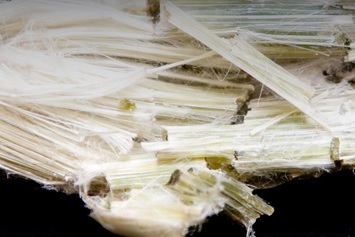The EPA’s final Significant New Use Rule (SNUR) for asbestos is a partial step to limit potential human exposure to the toxic substance.

As authorized by Section 5(a) of the Toxic Substances Control Act (TSCA), the SNUR requires that any person who intends to manufacture (which includes import) or process asbestos for any of the 18 specific uses named in the SNUR must notify the Agency through a significant new use notice (SNUN) at least 90 days before commencing the named use. Within that time frame, the EPA must evaluate whether the proposed use poses unacceptable risks to human health and the environment. If such risks are found, the Agency is empowered by TSCA to take any necessary regulatory action, including prohibiting the use, to address the risk. The significant new use includes the use of asbestos as part of an article.
Discontinued Uses
While the SNUR regulations are specific to new uses, the asbestos rule in fact is intended to regulate the reintroduction of asbestos uses that were initiated on or before August 25, 1989. As far as the EPA can tell, these uses are no longer ongoing in the United States. The discontinued uses addressed in the SNUR are adhesives, sealants, roof and nonroof coatings, arc chutes, beater-add gaskets, cement products, extruded sealant tape and other tape, filler for acetylene cylinders, friction materials, high grade electrical paper, millboard, missile liner, packings, pipeline wrap, reinforced plastics, roofing felt, separators in fuel cells and batteries, vinyl-asbestos floor tile, woven products, and other building products.
“Prior to this rule, asbestos products that are no longer on the market could come back without any roadblocks,” states the EPA. “Now, we’re ending this by ensuring that EPA has to opportunity to restrict these uses, further protecting public health.”
Other Tools
The SNUR is one of several existing and developing tools the EPA is employing to address asbestos, a substance for which there is no safe level of exposure.
- First, in 1989, the EPA attempted to impose a full ban on the manufacture, import, processing, and sale of asbestos-containing products. This endeavor was blocked by the court, which said the Agency failed to clear the very high bar set by TSCA for such a sweeping action. The Agency was able to maintain its ban on asbestos use in corrugated paper, roll board, commercial paper, specialty paper, and flooring felt, as well on new uses of asbestos. The ban on these uses continues and is unaffected by the final SNUR.
- Second, under Section 6 of the 2016 amendments to TSCA, the EPA is currently conducting risk evaluations of several ongoing uses of asbestos (specifically, imported raw bulk chrysotile asbestos for the fabrication of diaphragms for use in chlorine and sodium hydroxide production; and several imported chrysotile asbestos-containing materials, including sheet gaskets for use in chemical production (e.g., titanium dioxide production), brake blocks used in oil drilling equipment, aftermarket automotive brakes/linings and other vehicle friction products, and other gaskets). The new SNUR also does not affect these ongoing risk evaluations.
Under Section 6, if the EPA makes a finding of unreasonable risk of injury to health or the environment for any of the ongoing uses, the Agency is required by the statute to pursue risk management action options, including prohibitions on use. Risk management action by the Agency must be proposed within 1 year and finalized within 2 years of publication of the final asbestos risk evaluation document.
Recycling Included—Disposal Not
The SNUR discusses which activities are and are not new uses. For example, recycling falls within the definition of processing and, therefore, is considered a new use. The Agency interprets mining to be production under the TSCA definition of manufacture; therefore, mining asbestos for a significant new use as identified in the SNUR rule would require a SNUN. However, mining for any ongoing use of asbestos would not require a SNUN. Asbestos has not been mined or otherwise produced in the United States since 2002; therefore, any new raw bulk asbestos used in the United States is imported. Also, the Agency does not interpret the disposal of asbestos-containing materials to be processing for a significant new use.
